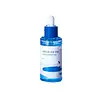What's inside
What's inside
 Key Ingredients
Key Ingredients

 Benefits
Benefits

 Ingredients Side-by-side
Ingredients Side-by-side

Water
Skin ConditioningButylene Glycol
HumectantGlycerin
HumectantPentylene Glycol
Skin ConditioningMethylpropanediol
Solvent1,2-Hexanediol
Skin ConditioningBetula Platyphylla Japonica Juice
Skin ConditioningXylitylglucoside
HumectantChlorella Vulgaris Extract
Skin ConditioningXylitol
HumectantLactobacillus Ferment
Skin ConditioningCurcuma Longa Root Extract
MaskingHydrolyzed Hyaluronic Acid
HumectantHyaluronic Acid
HumectantSodium Hyaluronate
HumectantAnhydroxylitol
HumectantGlucose
HumectantFructooligosaccharides
HumectantFructose
HumectantAmmonium Acryloyldimethyltaurate/Vp Copolymer
Ethylhexylglycerin
Skin ConditioningDipotassium Glycyrrhizate
HumectantDextrin
AbsorbentBeta-Glucan
Skin ConditioningGlyceryl Glucoside
HumectantTocopherol
AntioxidantDipropylene Glycol
HumectantDimethylsilanol Hyaluronate
HumectantHydrolyzed Sodium Hyaluronate
Skin ConditioningPotassium Hyaluronate
Skin ConditioningHydroxypropyltrimonium Hyaluronate
Sodium Hyaluronate Crosspolymer
HumectantSodium Hyaluronate Dimethylsilanol
HumectantSodium Acetylated Hyaluronate
HumectantCaprylyl/Capryl Glucoside
CleansingHydrogenated Lecithin
EmulsifyingCeramide NP
Skin ConditioningXanthan Gum
EmulsifyingGardenia Florida Fruit Extract
Skin ConditioningWater, Butylene Glycol, Glycerin, Pentylene Glycol, Methylpropanediol, 1,2-Hexanediol, Betula Platyphylla Japonica Juice, Xylitylglucoside, Chlorella Vulgaris Extract, Xylitol, Lactobacillus Ferment, Curcuma Longa Root Extract, Hydrolyzed Hyaluronic Acid, Hyaluronic Acid, Sodium Hyaluronate, Anhydroxylitol, Glucose, Fructooligosaccharides, Fructose, Ammonium Acryloyldimethyltaurate/Vp Copolymer, Ethylhexylglycerin, Dipotassium Glycyrrhizate, Dextrin, Beta-Glucan, Glyceryl Glucoside, Tocopherol, Dipropylene Glycol, Dimethylsilanol Hyaluronate, Hydrolyzed Sodium Hyaluronate, Potassium Hyaluronate, Hydroxypropyltrimonium Hyaluronate, Sodium Hyaluronate Crosspolymer, Sodium Hyaluronate Dimethylsilanol, Sodium Acetylated Hyaluronate, Caprylyl/Capryl Glucoside, Hydrogenated Lecithin, Ceramide NP, Xanthan Gum, Gardenia Florida Fruit Extract
Water
Skin ConditioningGlycerin 30%
HumectantDicaprylyl Carbonate
EmollientSqualane
EmollientNiacinamide
SmoothingPropanediol
SolventSodium Polyglutamate
HumectantCeramide NP
Skin ConditioningMadecassoside
AntioxidantBisabolol
MaskingTocopheryl Acetate
AntioxidantAllantoin
Skin ConditioningPhenoxyethanol
PreservativeGlyceryl Stearate
EmollientDisodium EDTA
Xanthan Gum
EmulsifyingPolyacrylate Crosspolymer-6
Emulsion StabilisingEthylhexylglycerin
Skin Conditioning
 Reviews
Reviews

Ingredients Explained
These ingredients are found in both products.
Ingredients higher up in an ingredient list are typically present in a larger amount.
Ceramide NP is a type of ceramide and formally known as ceramide 3.
Ceramides are intercellular lipids naturally found in our skin that bonds dead skin cells together to create a barrier. They are known for their ability to hold water and thus are a great ingredient for dry skin.
Ceramides are an important building block for our skin barrier. A stronger barrier helps the skin look more firm and hydrated. By bolstering the skin ceramides act as a barrier against irritating ingredients. This can help with inflammation as well.
If you would like to eat ceramides, sweet potatoes contain a small amount.
Read more about other common types of ceramides here:
Ceramide AP
Ceramide EOP
Ethylhexylglycerin (we can't pronounce this either) is commonly used as a preservative and skin softener. It is derived from glyceryl.
You might see Ethylhexylglycerin often paired with other preservatives such as phenoxyethanol. Ethylhexylglycerin has been found to increase the effectiveness of these other preservatives.
Glycerin is already naturally found in your skin. It helps moisturize and protect your skin.
A study from 2016 found glycerin to be more effective as a humectant than AHAs and hyaluronic acid.
As a humectant, it helps the skin stay hydrated by pulling moisture to your skin. The low molecular weight of glycerin allows it to pull moisture into the deeper layers of your skin.
Hydrated skin improves your skin barrier; Your skin barrier helps protect against irritants and bacteria.
Glycerin has also been found to have antimicrobial and antiviral properties. Due to these properties, glycerin is often used in wound and burn treatments.
In cosmetics, glycerin is usually derived from plants such as soybean or palm. However, it can also be sourced from animals, such as tallow or animal fat.
This ingredient is organic, colorless, odorless, and non-toxic.
Glycerin is the name for this ingredient in American English. British English uses Glycerol/Glycerine.
Learn more about GlycerinWater. It's the most common cosmetic ingredient of all. You'll usually see it at the top of ingredient lists, meaning that it makes up the largest part of the product.
So why is it so popular? Water most often acts as a solvent - this means that it helps dissolve other ingredients into the formulation.
You'll also recognize water as that liquid we all need to stay alive. If you see this, drink a glass of water. Stay hydrated!
Learn more about WaterXanthan gum is used as a stabilizer and thickener within cosmetic products. It helps give products a sticky, thick feeling - preventing them from being too runny.
On the technical side of things, xanthan gum is a polysaccharide - a combination consisting of multiple sugar molecules bonded together.
Xanthan gum is a pretty common and great ingredient. It is a natural, non-toxic, non-irritating ingredient that is also commonly used in food products.
Learn more about Xanthan Gum